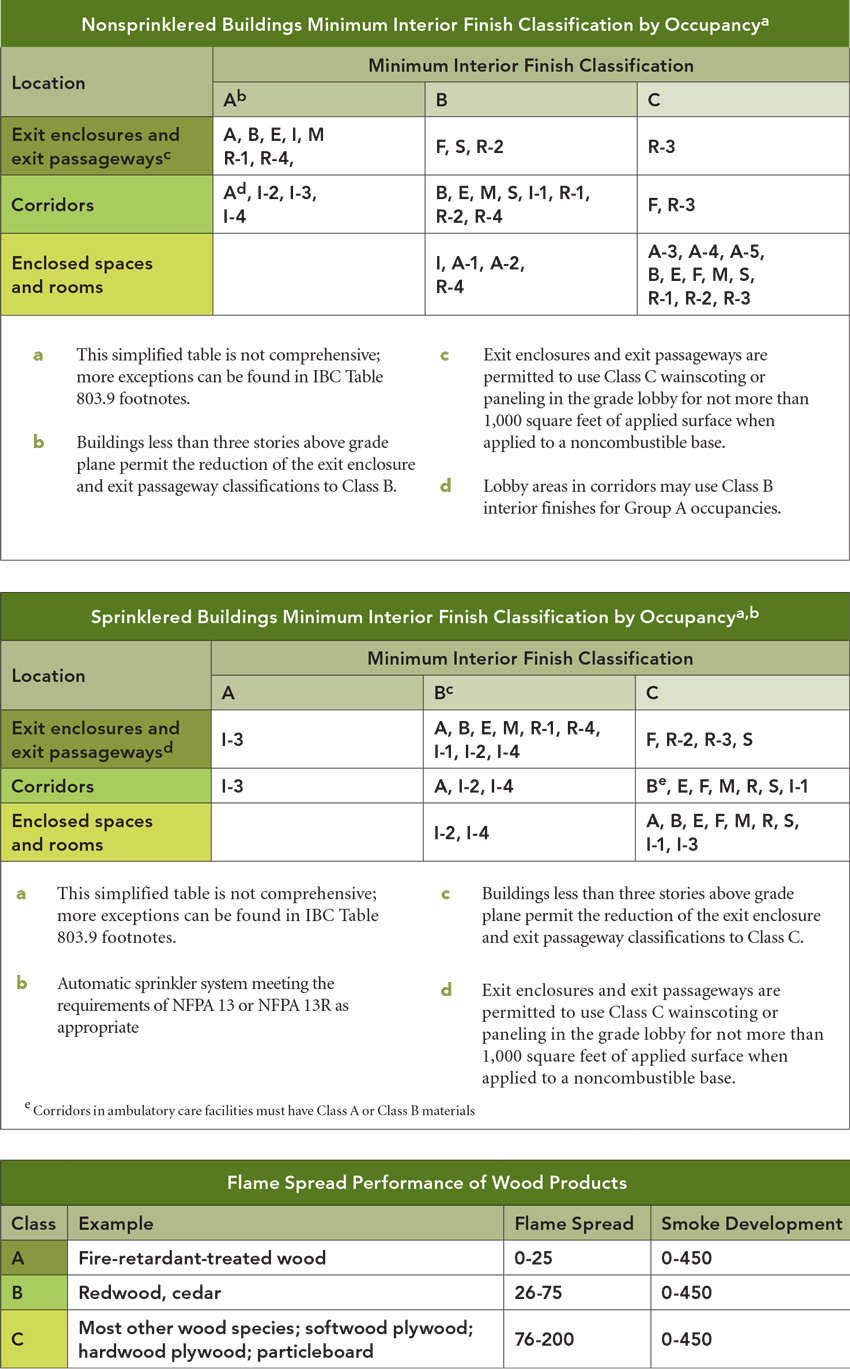Designing for Fire Protection
New Height and Area Provisions
Chapter 5 was revised in the 2015 edition of the IBC. However, the revisions focused primarily on format, to include increases for sprinklers into new tables with values and factors referenced in new height and area formulas. Though the equations and tables differed from the 2012 IBC, the resulting building sizes did not. This new approach has remained relatively unchanged in the 2018 IBC.
Open Perimeter Fire Protection
In general, there are two passive measures that decrease a building’s fire hazard: isolating the building from other structures and constructing the building with fire-resistive elements. IBC Chapter 5 provides for increases to the allowable area factor in Table 506.2 for the addition of open perimeter spacing, the use of noncombustible materials, and the use of fire-resistive elements and assemblies.
Isolating a building from adjacent structures decreases the fire hazard of a building as well as that of adjacent structures. The allowable area of a building is determined in accordance with the applicable provisions of Sections 506.2.1 through 506.2.4 and Section 506.3. In a single occupancy building with no more than one story above grade plane, allowable area is determined in accordance with Equation 5-1.
Equation 5-1:
Aa = At + (NS x If)
where: Aa = Allowable area (square feet)
At = Tabular allowable area factor (NS, S1, S13R, or S13D value, as applicable) in accordance with Table 506.2
NS = Tabular allowable area factor in accordance with Table 506.2 for nonsprinklered building (regardless of whether or not the building is sprinklered)
The area factor increase based on frontage (open perimeter) is determined in accordance with the following Equation 5-5:
If = [F/P – 0.25]W/30.
where: If = Area factor increase due to frontage
F = Building perimeter that fronts on a public way or open space having minimum distance of 20 feet (6096 mm).
P = Perimeter of entire building (feet).
W = Width of public way or open space (feet) in accordance with Section 506.32
Allowable Increases for Frontage Distance
Buildings located next to a public way or open space adjoining a public way, with the exterior wall a minimum width of 20 feet from the public way for more than 25% of the building perimeter, may qualify for an area factor increase based on frontage distance in accordance with Equations 5-4 and 5-5.
Equation 5-4:
W = (L1 × w1 + L2 × w2 + L3 × w3…)/F (Equation 5-4) where:
W (Width: weighted average) = Calculated width of public way or open space (feet).
Ln = Length of a portion of the exterior perimeter wall.
wn = Width (≥ 20 feet) of a public way or open space
associated with that portion of the exterior perimeter wall.
F = Building perimeter that fronts on a public way or open space having a width of 20 feet (6,096 mm) or more.
Equation 5-5:
The area factor increase based on frontage is determined in accordance with the following
If = [F/P - 0.25] W/30 where:
If = Area factor increase due to frontage
F = Building perimeter that fronts on a public way or open space having minimum distance of 20 feet (6,096 mm)
P = Perimeter of entire building (feet)
W = Width of public way or open space (feet) in accordance with Section 506.3.2
It should be noted that frontage widths (W) greater than 30 feet will only receive credit for a value of 30 feet. The maximum increase that can be obtained for frontage would occur when 100% of the perimeter has frontage of 30 feet or more and would result in an area factor increase of 0.75.











